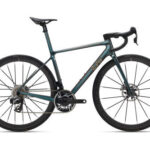Considering powering your electric bike with Tesla batteries? It’s a question many DIY enthusiasts and budget-conscious riders ponder. The appeal is understandable: Tesla is synonymous with electric vehicle technology, and the idea of repurposing their batteries for an e-bike project can seem both innovative and cost-effective. However, diving into the world of used Tesla cells requires careful consideration.
Used Tesla batteries for e-bikes are often available, but they come with caveats. These cells are unlikely to be brand new and will have some degree of capacity degradation. To truly assess their viability, each cell should ideally be tested to determine its remaining capacity. Remember, the overall performance of your battery pack is limited by its weakest cell. While using second-hand cells can be a route to a lower Tesla E Bike Price for your battery components, it’s essential to acknowledge the potential trade-offs.
Building a battery with used cells can be labor-intensive. If a cell fails, diagnosing and replacing it with a compatible cell to maintain balance within the pack can be complex. This contrasts with the relative simplicity and assured lifespan of new cells from reputable manufacturers like Samsung, Sony, or LG. Alternatively, pre-made batteries from trusted vendors such as ebikes.ca, ping battery, or EM3ev offer convenience and reliability, albeit potentially at a higher upfront tesla e bike price point compared to sourcing used components.
While successful DIY battery builds using used Tesla cells are achievable, they demand time, technical know-how, and an acceptance of reduced battery lifespan and potential maintenance. Unless you secure a significantly advantageous deal on used cells and are prepared for the intricacies of managing a used battery system, opting for new cells or a pre-built battery pack is generally the more straightforward and dependable path for powering your electric bike.


